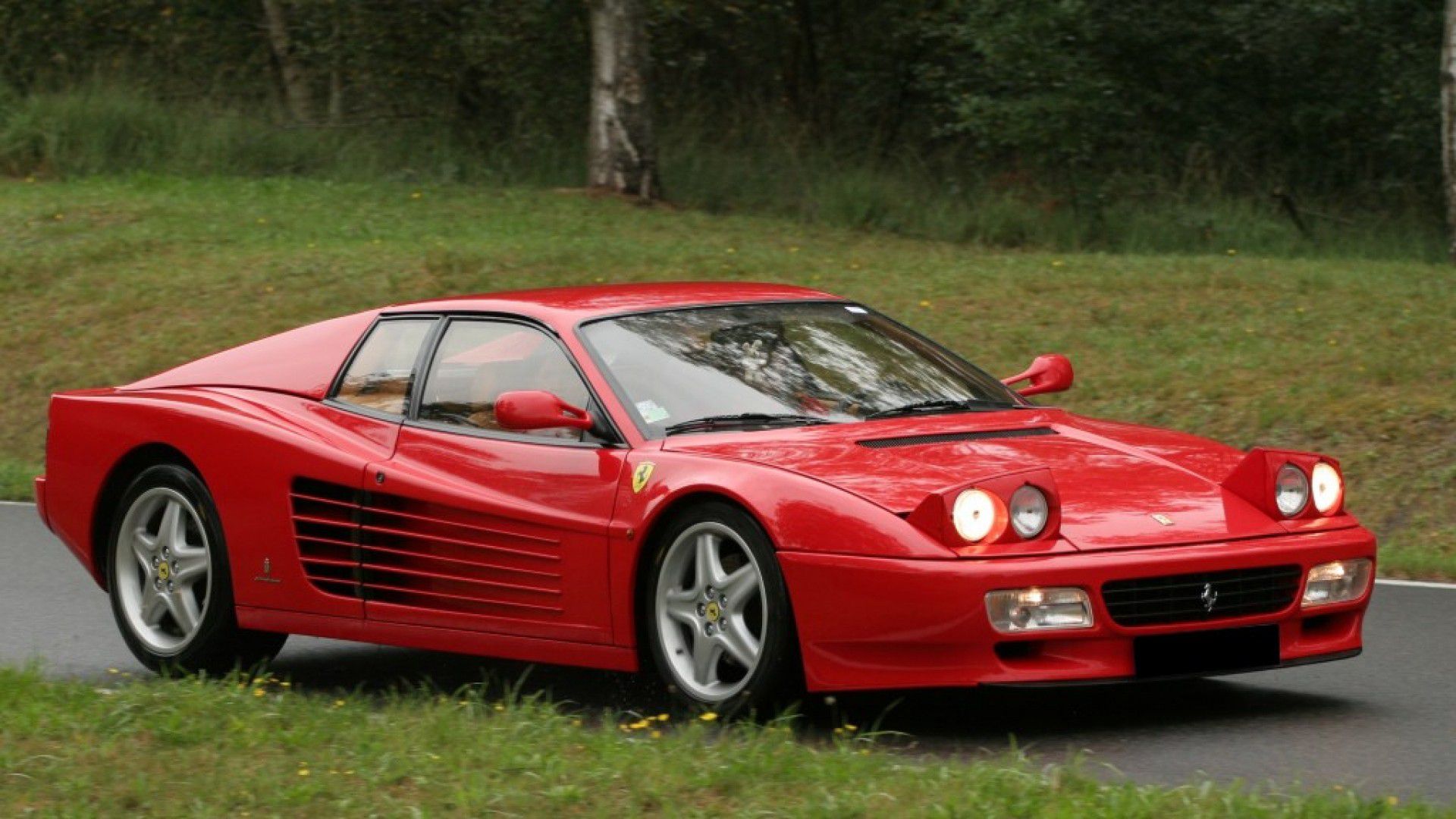Ferrari 512 TR
The Testarossa (TR 512 with its evolutions and F512 M) is a mid-engined berlinetta produced by Ferrari from 1984 until 1996.
At the 1984 Paris Motor Show, Ferrari unveiled the successor to the 512 BB, which kept the mechanics. The car, with its line, designed by Pininfarina, characterized by greatly enlarged tail (dominated by the rectangular lights embedded in a series of horizontal bars) and large side grilles, immediately aroused wide acclaim (and some criticism: even someone considered too, closer to ostentation Lamborghini sporty elegance Ferrari). The interiors, luxuriously finished, they were opulent.
Originally, the Testarossa had only one mirror very prominent place and curiously in the middle of the windscreen pillar, groped to improve the very poor rear visibility, hampered by the massive tail; such placement was not, in fact, particularly elegant, for which in 1986 was switched to a more traditional solution, with two mirrors at the base of the uprights.
The mechanics were borrowed from the previous model, but was refined: the 12-cylinder V-180 of 4942 cm ³ benefited from a new cylinder head with 4 valves per cylinder and engine now produced a power output of 390hp. The rear axle was equipped with dual shock absorbers.
The original Testarossa remained in production virtually unchanged (except for detail changes in circles and equipment) until 1992. In 1989, however, to comply with anti-pollution legislation was mounted catalytic converter, resulting in loss of power to 380hp.
Testarossa Ferrari produced a single model in the spider version for the lawyer Gianni Agnelli.
The motor 12 opposed cylinders could push the Testarossa at a speed of over 290km/h.
At the Los Angeles Motor Show 1992 debuted the 512 TR, evolution of the first Testarossa. The cosmetic changes were limited (new front end, with a different grille and new bumpers), but the interior (totally new) and the mechanics were substantial.
The engine was also modified in the pistons, the motor shaft and the intake ducts and exhaust, got a new fuel injection system from Bosch. The power went up to 428hp and a top speed of 314km/h. Acceleration from 0 to 100km/h in 4.8 secondshappening.
The frame was subjected to many changes (such as the adoption of steel pipes of larger section) designed to improve the torsional rigidity and resistance in the event of impact. Since 1993, ABS anti-lock disengaged was provided as an option, in Italy at a cost of 10.71 million lire
In 1994 he made his debut the latest evolution of the Testarossa, the F512 M.
The styling changes were mainly concerned with the front (with a redesigned grille and headlights faired view from a Plexiglas cover, instead of disappearing like the previous series), bumpers (new), rear lights (double, circular and without screening) and wheels (5-spoke design with modular helical). Within a few details changed, while from a technical novelties were higher.
The engine’s power increased to 440hp and performance, thanks to the low weight of 60kg, were talking about a speed of 315km/h and an acceleration in 4.68 s. The sprint from 0 to 1000 m was covered in 22’7 s. The ABS became standard.
To this day it remains one of Ferrari’s most popular, both because of the small number of units produced (limited to 500), and for being the last produced by Ferrari 12-cylinder opposed (the first presentation went back to the Ferrari 365 GT4 BB lodged in 1973), and the last to mount the rear of this division.
The F512 M left the list in 1996, to make way for the 550 Maranello. In total were produced around 10 000 Testarossa, 512 TR 512 F and M.
1954404.8
